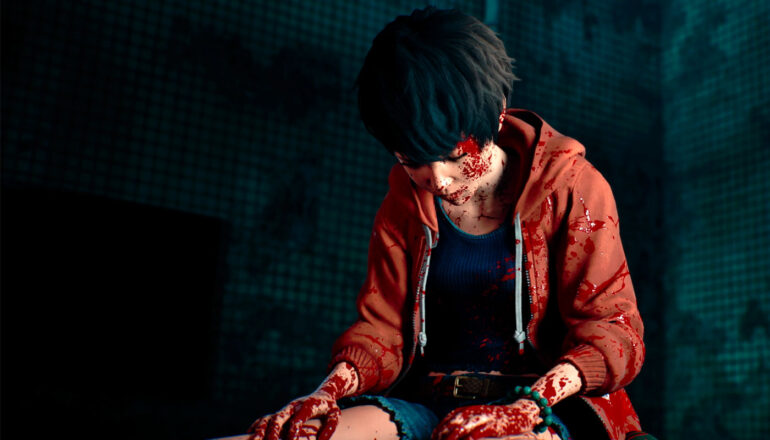I can almost guarantee you’ve never played anything quite like Slitterhead. Bizarre name aside, the game is the latest from the mind of Keiichiro Toyama, who was instrumental in bringing us some stellar titles like the original Silent Hill, Gravity Rush and Forbidden Siren. It’s an incredible artistic undertaking, blurring genres to offer a unique experience. And while Slitterhead feels like a game made precisely for people like me, it’s not entirely without its faults, especially from a technical standpoint.
The premise of Slitterhead is fairly simple. You play as a Hyoki, a non-physical spirit who can possess other humans. Affectionately named Night Owl by another character you meet early on, you “wake up” as the spirit and realise that your memories are gone. The only thing you do remember is that your life goal, for some reason, is to eradicate the Slitterheads from the living world. They’ve been let loose on the Hong Kong-but-not city of Kowlong, attacking humans and sucking out their brains through their eye sockets. It’s gross and fantastic and, obviously, goes in some pretty dark places.
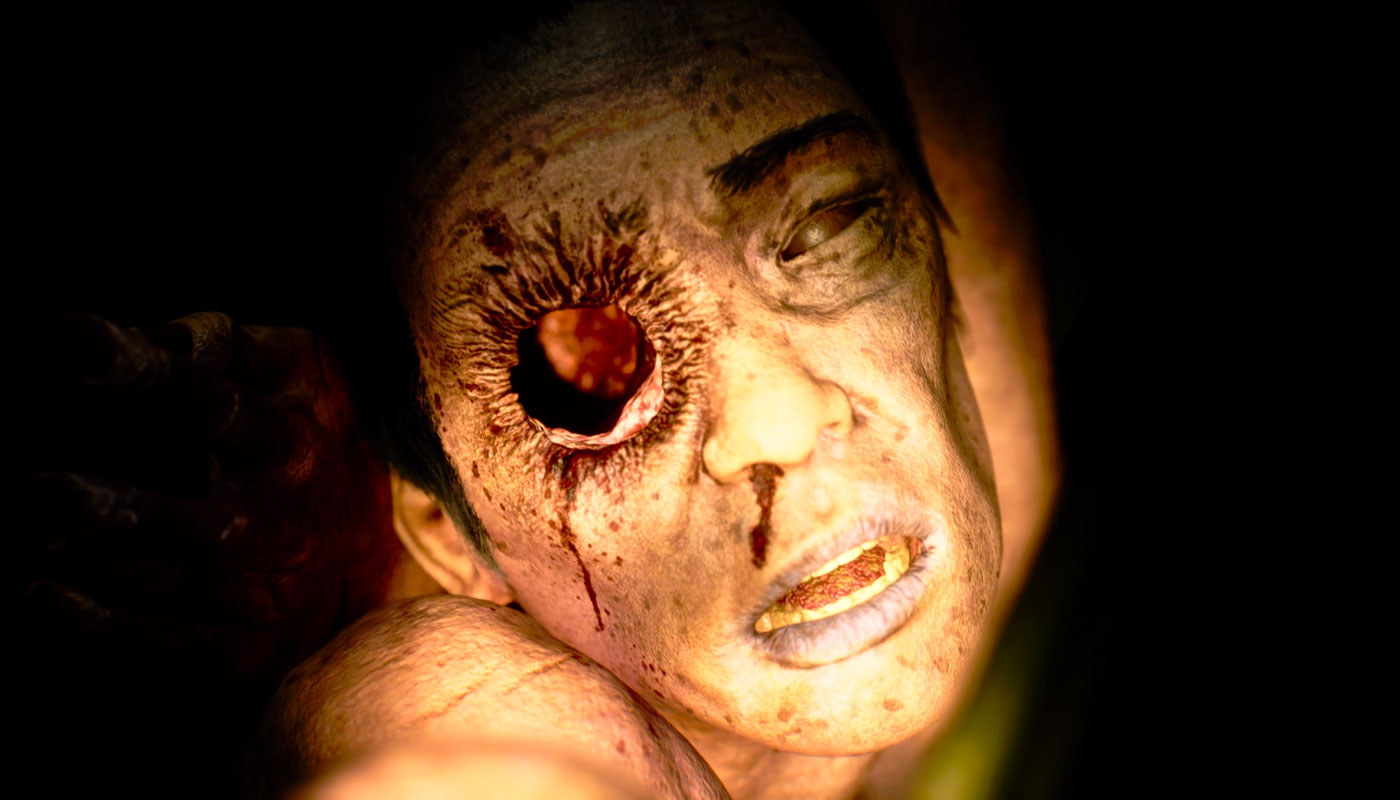
All in all, across Slitterheads twelve-hour campaign, I was enthralled by the weird story that Toyama is trying to tell here. While the characters are flat, there were many times when the game would throw me a curveball that I was not expecting. It’s a fairly strong story, anchored in the occult, as you’d expect from a game about a ghost. But it’s the unique spin on typical horror conventions that Slitterhead puts on things that really helps it to stand out. If you’re familiar with how the Siren games tell their stories, you’ll understand what Slitterhead is going for. It’s an incredibly obtuse story that’s equal parts weird and fascinating.
The game is split into chapters, with each chapter having you track and investigate the source of the Slitterheads or other leads in Kowlong as key characters, called Rarities, find them. The missions themselves are semi-open, allowing you to roam the streets of Kowlong before undertaking some kind of platforming challenge or possession puzzle before eventually coming head-to-head with one of the titular creatures. It’s a simple enough premise – though each level is semi-open, the solutions are often linear and, even bizarrely, the game never gives you a map nor regular waypoints if you’ve got multiple objectives to complete.
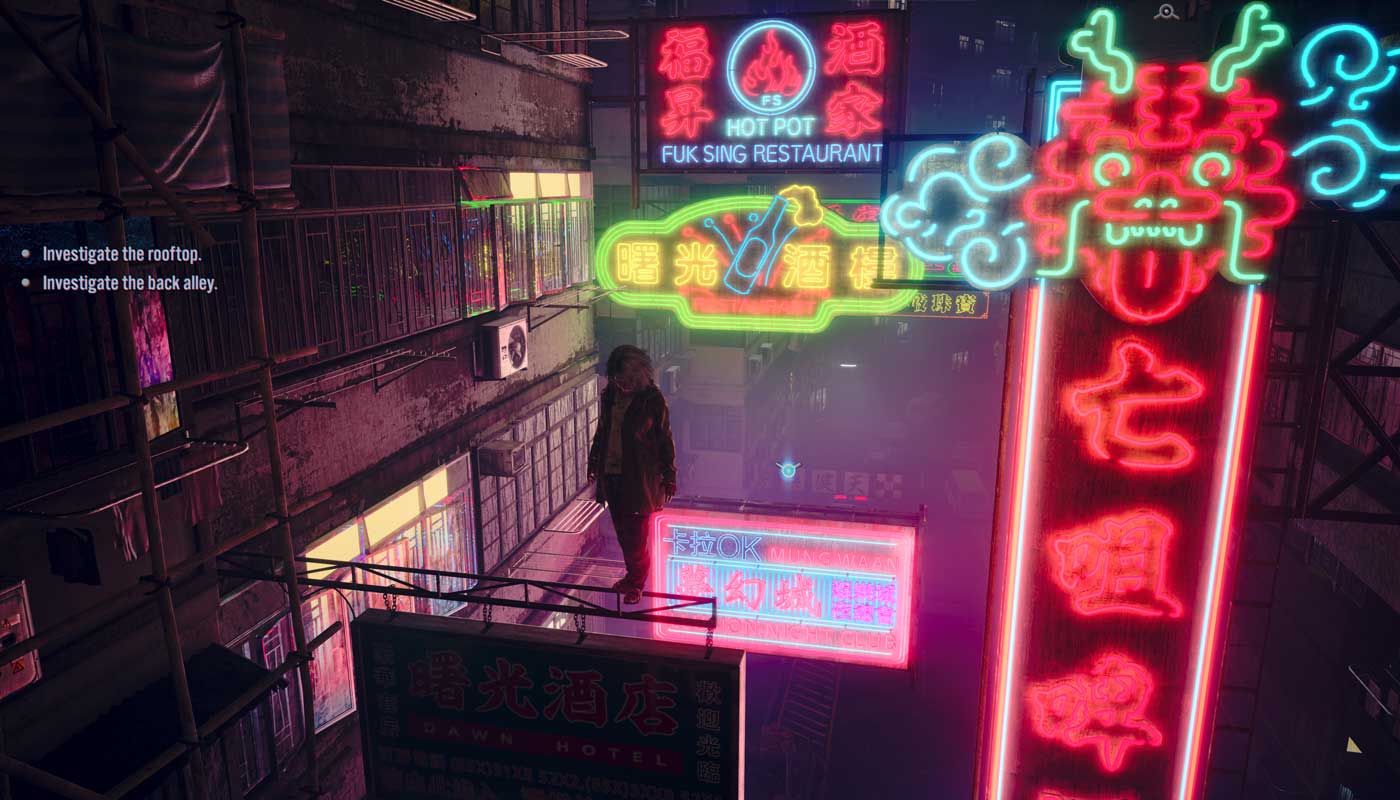
The crux of the experience is you playing as the Hyoki, holding a shoulder button to leave whoever you’ve possessed and allowing you to float a short distance to another body you can see. There are a few simple rules to keep things fair – you can’t possess bodies that are far away, you can’t possess bodies that you don’t have a line of sight with, and you can’t possess bodies that you “don’t have good sync” with. It’s a fair system with simple rules that keep things from getting too broken as time goes by.
The possession mechanic really comes into play more substantially when combatting the Slitterheads. Essentially, the Hyoki can switch between multiple bodies and harness the blood of each individual to physically conjure weapons. Clubs, katanas and grenades: There are many combat options that you can use as time goes by. The Hyoki can “die” if the body you’re in dies while possessing it. To survive in Slitterhead, you must jump from body to body as regularly as possible. You get better combos and do more damage after moving from one body to another, too, incentivising the need to constantly jump between bodies. It’s a bleak take on things to see how little regard Hyoki has for human life, but a spirit’s gotta do what a spirit’s gotta do.
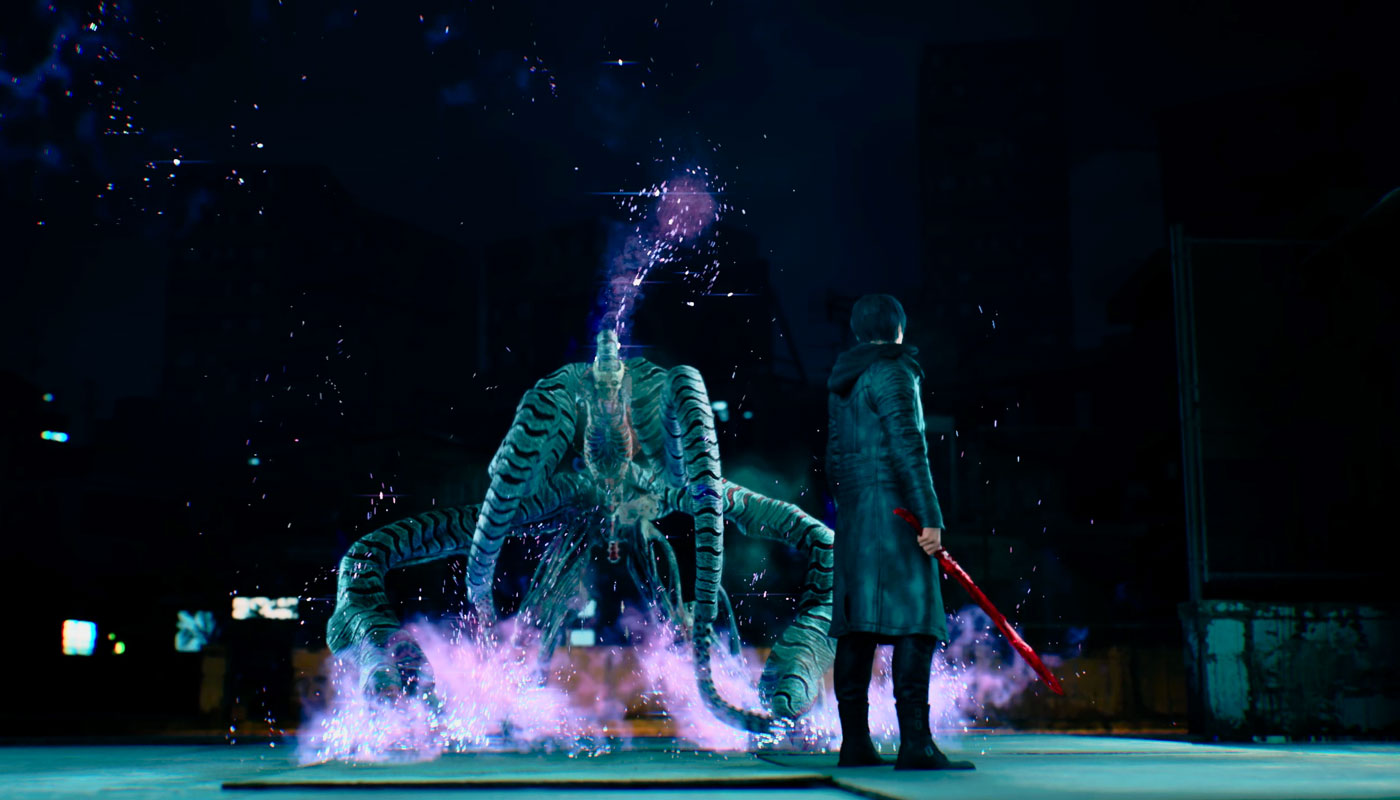
All civilians share similar abilities, but the crux of the strategising happens in the Rarities system. Throughout Kowlong, you’ll be able to find specific individuals who are “more highly attuned” to Hyoki and thus exhibit greater benefits when possessed. Essentially, these rarities form the main cast of the game and are the characters you’ll speak to between missions to better discuss what’s going on in the story. Even better, all of the Rarities are equipped with unique weapons and abilities compared to regular civilians and do more damage.
The first you acquire, Julee, uses large Wolverine-esque claws to do massive damage to the Slitterheads. The potential second, Alex can conjure a vortex from blood to draw enemies in before finishing them off with a charged bloody projectile from his shotgun. The elderly Betty can even convert fallen pools of blood on the ground into damaging blades. You can take up to two Rarities with you on each mission, so you can find your favourites fairly quickly and create a team that synergises well, as each has individual strengths and weaknesses.
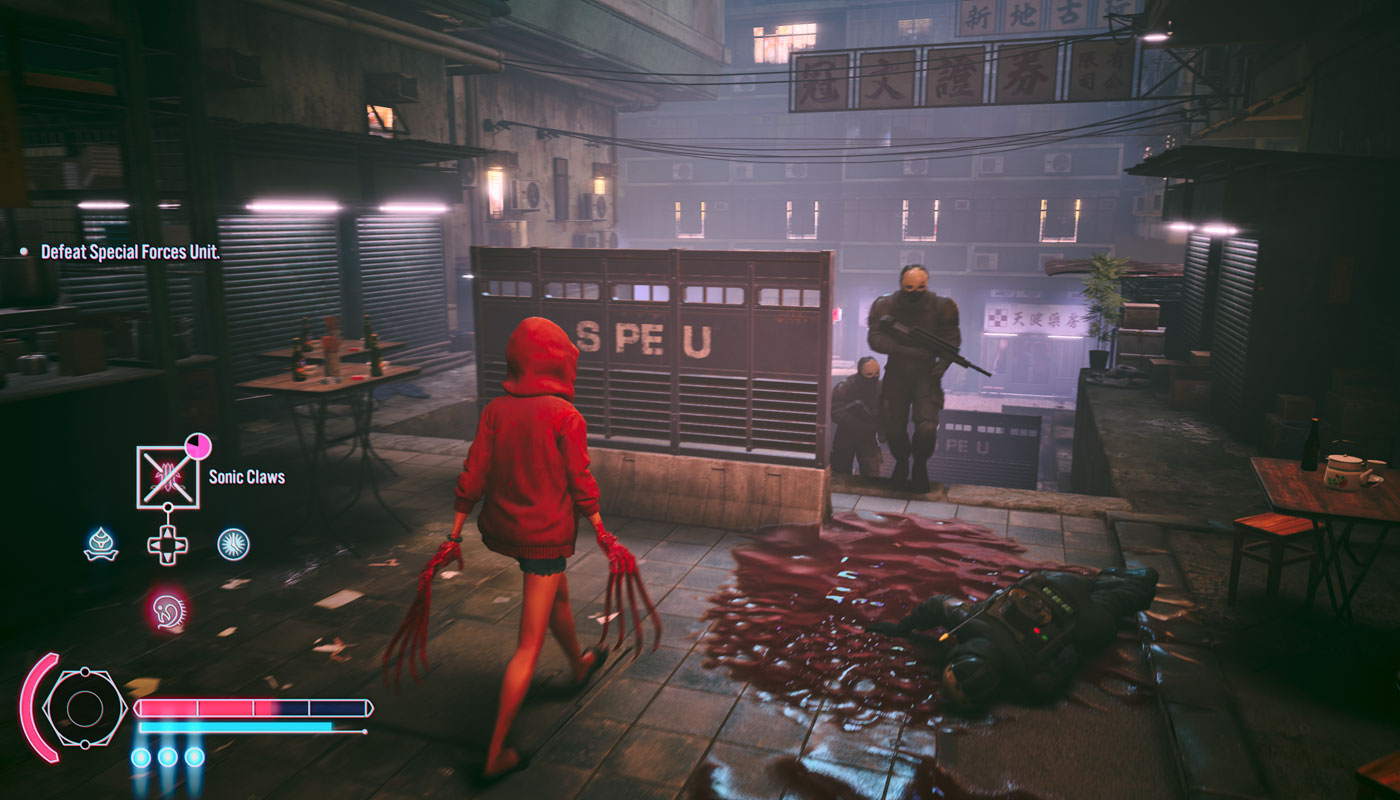
Combat itself occupies a space solely between the more considered heavier mechanics of a Dark Souls game and the more hectic, over-the-top spectacle of character action games like Devil May Cry. It’s a good combat system with all the trimmings you’d expect from a modern action game – blocking, parrying, slowed time for perfect parries and meter management by literally soaking up the blood from the streets as it’s spilt. I was playing the game’s hardest difficulty and still having fun – many games like this often have janky mechanics that feel unfair or downright broken, but Slitterhead’s combat is tighter than you’d expect, especially as you unlock more skills.
But while Slitterhead plays much, much better than its initial trailers would have you believe, the combat does feel incredibly punishing when dealing with more than one enemy at once. You can unlock specific skills that make fighting multiple enemies a lot easier – even some of the Rarity unique abilities, too – but it does feel like there were a few moments where I would get teamed up on and be destroyed almost too quickly.
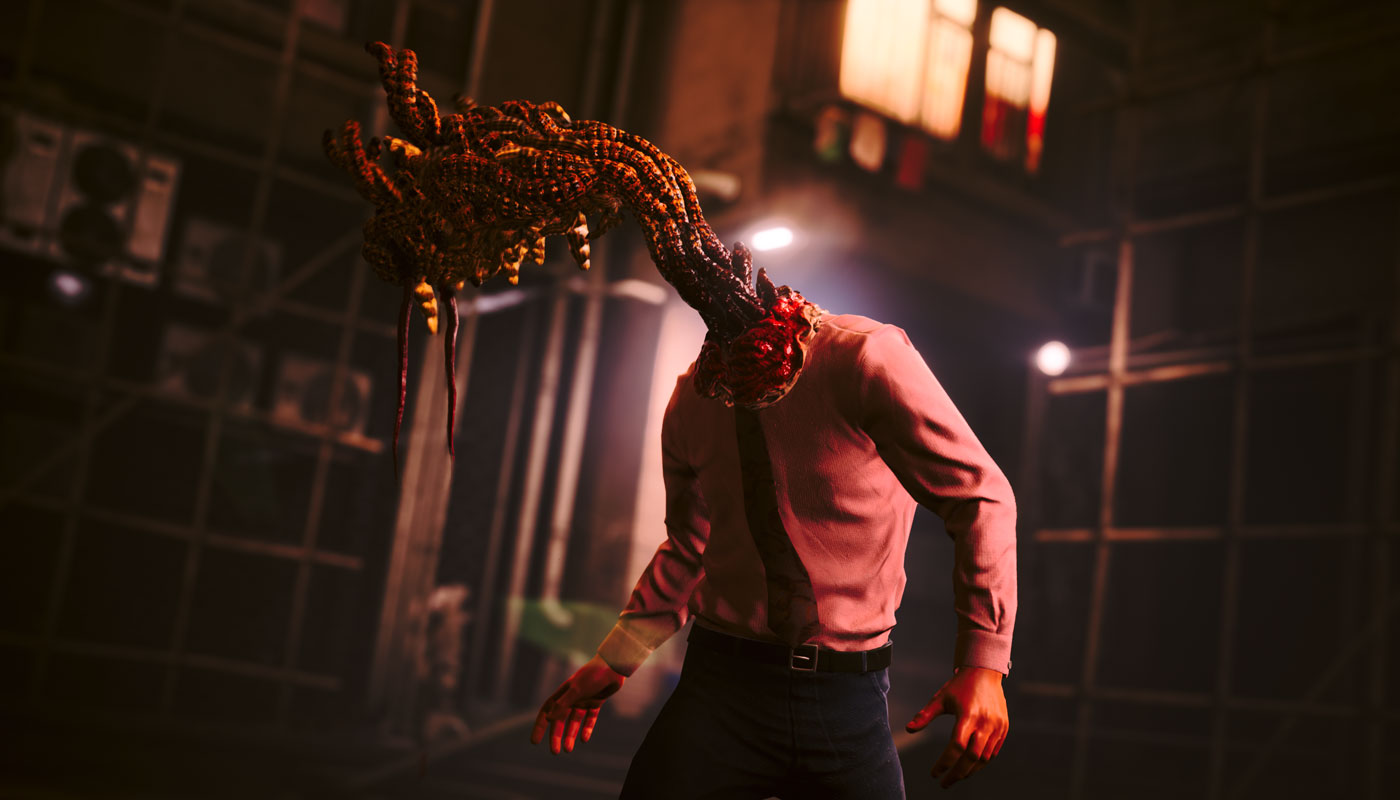
The other glaring issue I have with Slitterhead is the distinct lack of enemy variety. I can almost excuse the location variety being low – this story is solely the story of Kowlong and helps this smaller team to stretch their budget – but there are not many types of Slitterheads to fight. I adore the designs of what is here, however, once again harkening back to Toriyama’s work on the Siren games. To see a creature inspired by the Blue Ringed Octopus was also uncanny, as an Australian. However, they’ve been popping up more and more in Japan recently. A fun but incredibly irrelevant piece of world news for you.
But enough about cephalopods. Between missions, you’ll be thrown to a menu where you can chat with Rarities to reflect on the story, upgrade your skills or even gain new leads that’ll lead you to new missions. It’s also here where you can replay missions, framed as a time-travelling power used by the Hyoki to unlock new Rarities or complete optional objectives. There’s a lot to do in Slitterhead, both mandatory and optional, including small arena challenges hidden in each world. Additionally, how the story is handled non-linearly across multiple characters’ perspectives feels incredibly reminiscent of the Siren games.
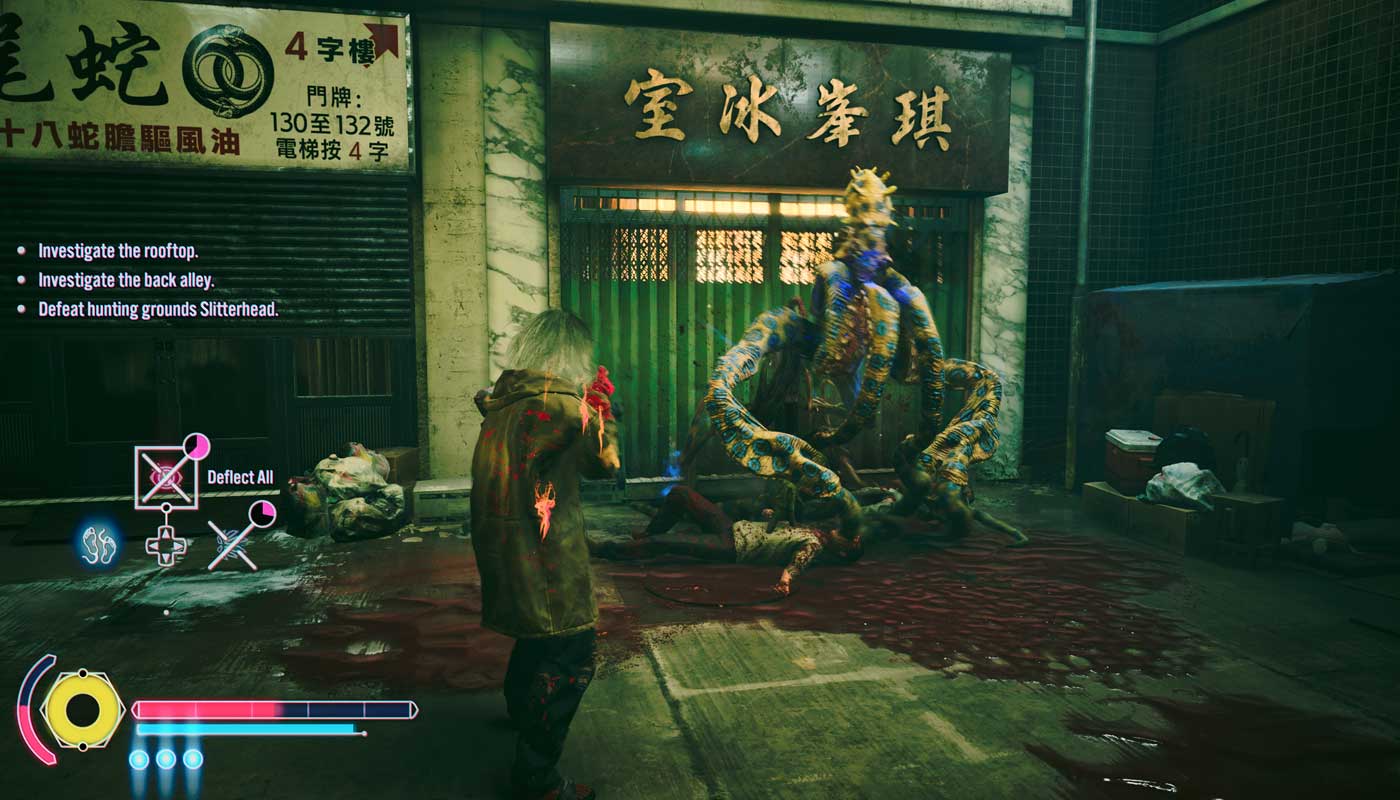
Regardless of its shortcomings, Slitterhead is quite the looker. While character models can look pretty rough – sometimes plasticky, other times generic – the world of Kowlong is brought to life with incredible lighting. Every street and every alley has been drenched with astonishing lighting, shadows and plenty of neon to really sell the idea of this gritty, long-forgotten otherworld. It all pops in HDR, too. Even better, all of this runs at a very solid sixty frames per second. Perhaps a fidelity mode with raytracing would’ve been appreciated, as it would look perfect in this kind of world, but regardless, Slitterhead looks better than you’d expect from a game of this scope and scale from a team this new.
Where scope and scale is a bit more obvious, however, is with the game’s voice work. First, there’s barely any of it – most of the dialogue in the game is text with the odd grunt or giggle to help establish the speaker’s tone. There are some voiced moments in cutscenes, but otherwise, it does feel notably low-budget. On the other hand, Akira Yamaoka’s original soundtrack is excellent here. It’s the same ethereal score featuring dark synths, industrial noise and guitars that you’d expect from a Yamaoka soundtrack, but he especially cooked with Slitterhead.
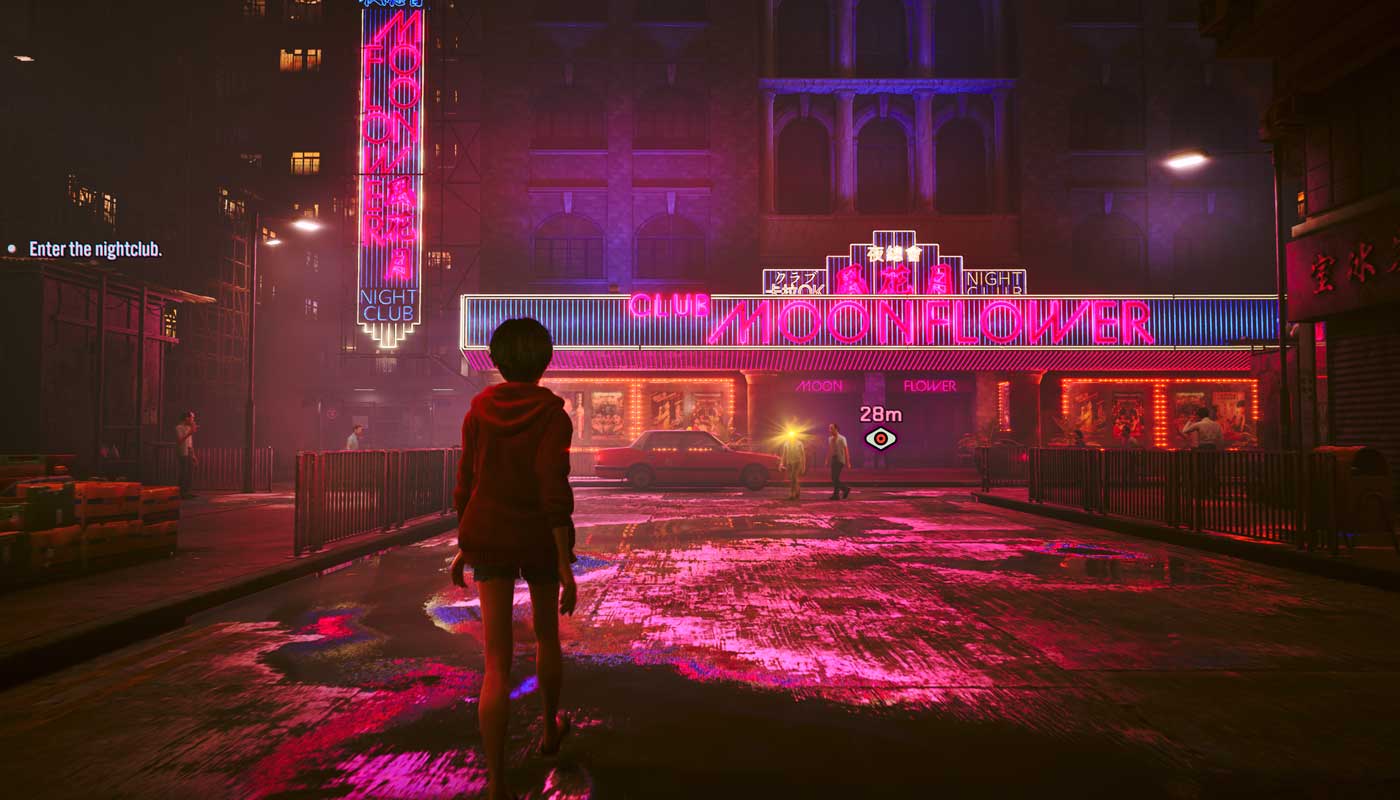
I said earlier that Slitterhead feels like a game made for me, and I stand by that. It’s an incredibly unique idea with an even more unique combat system anchored to a bizarre but engaging narrative. It’s the kind of game that Japan Studio would be making if they were still around, the kind of ideas-driven adventure that you just don’t see as much anymore. And while there are some bizarre omissions – namely the lack of a map and a combat system that’s great only ninety per cent of the time – Slitterhead is a stellar debut from some incredible minds that excites me to see where Bokeh goes next.


